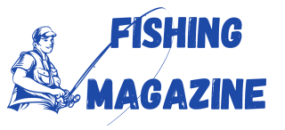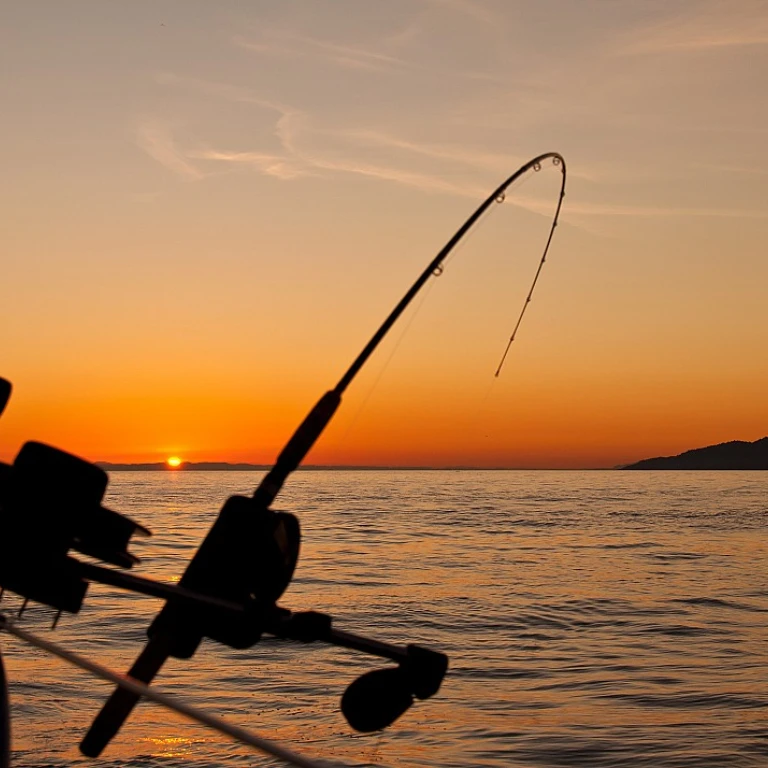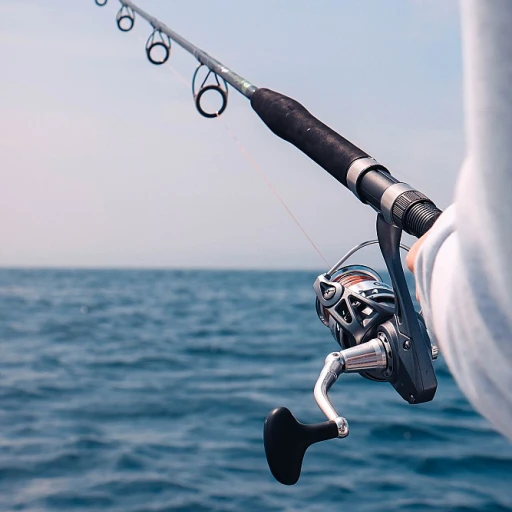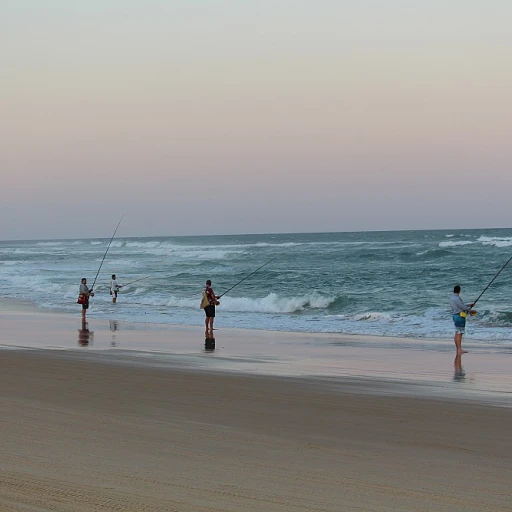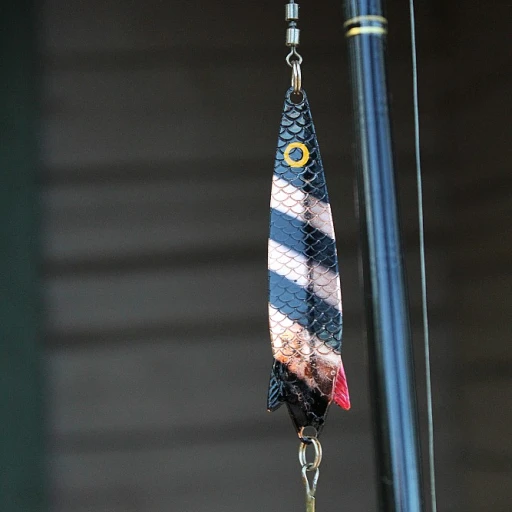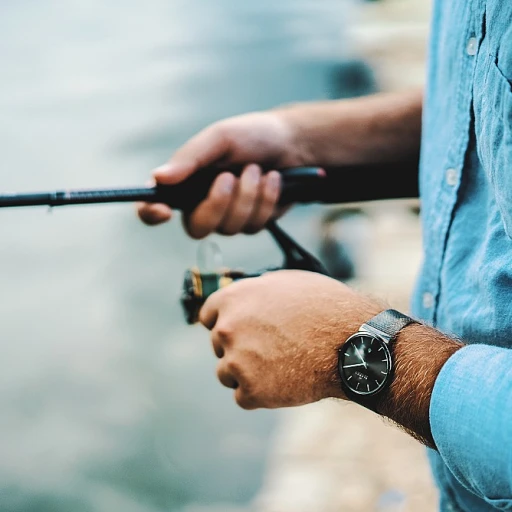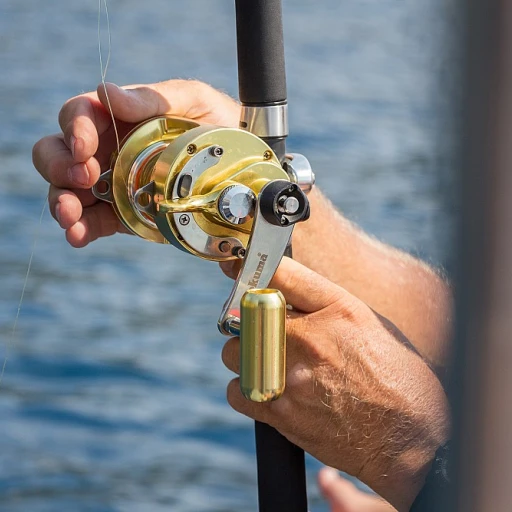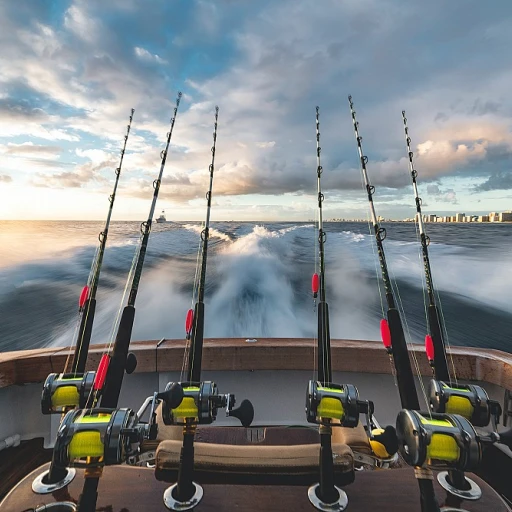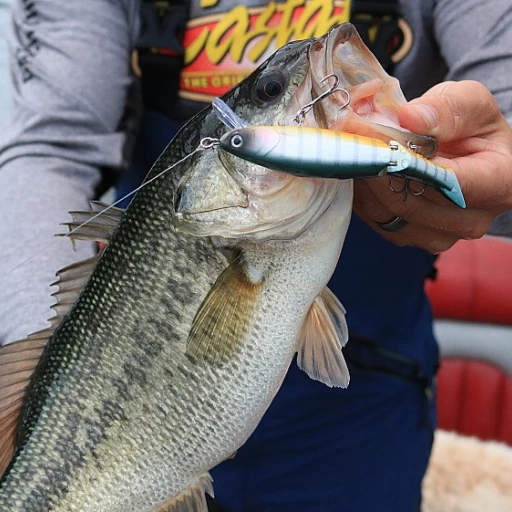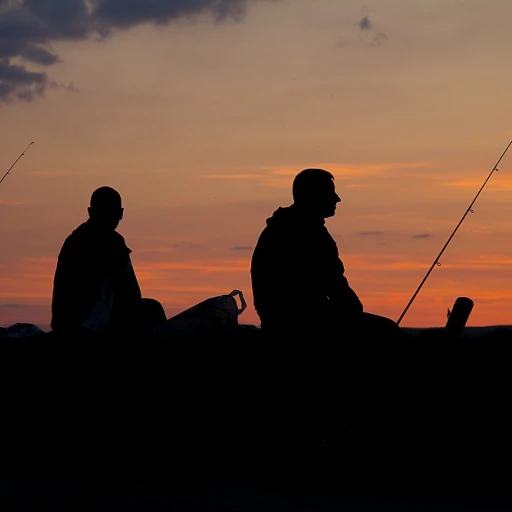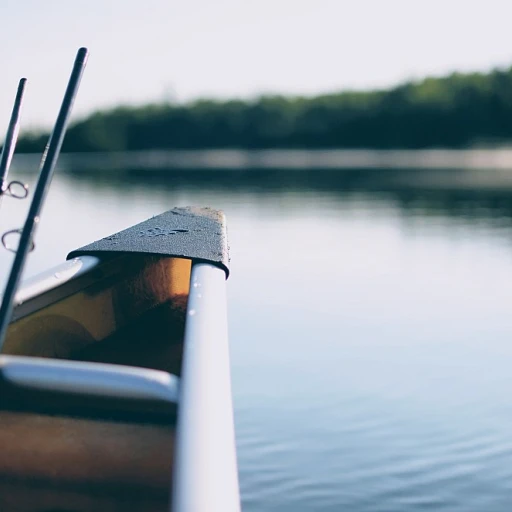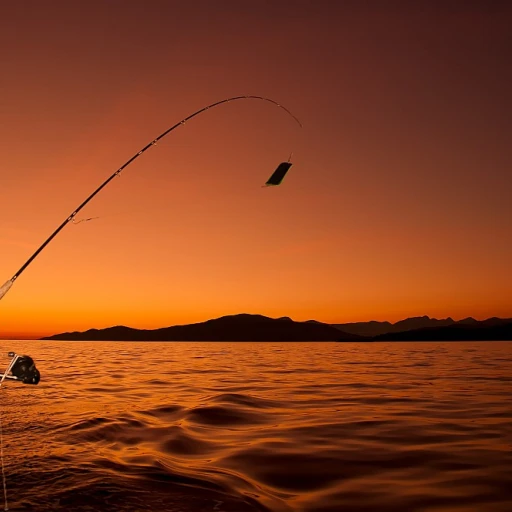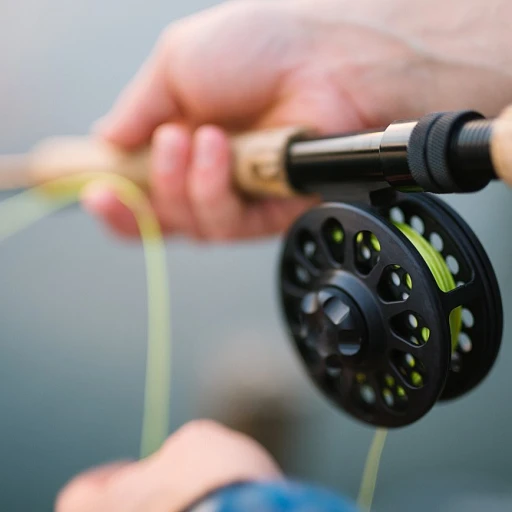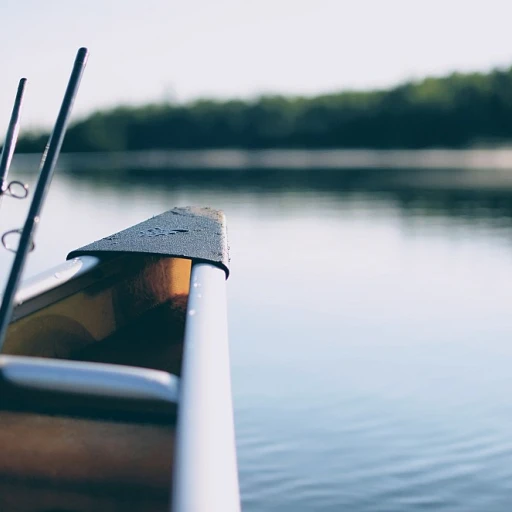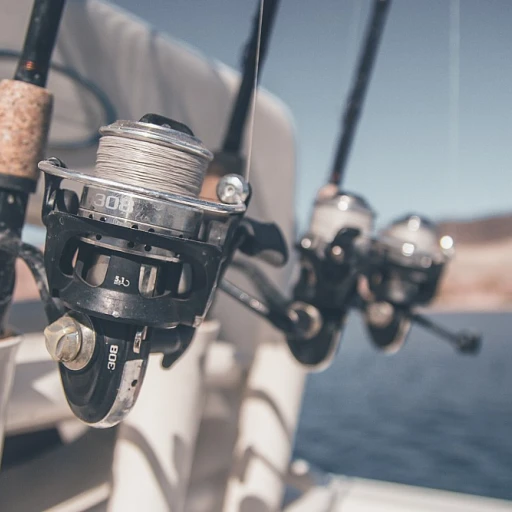
The Timing of Walleye Spawning
When Walleyes Get Busy: Timing the Spawn
Ah, the walleye. A fish that has captured the hearts of anglers all over. But when it comes to spawning, timing is everything. The walleye spawning season is a spectacle that unfolds with the rhythm of nature, mainly in the spring when water temperatures start to rise. As the ice melts away and water levels adjust, walleyes begin their journey to the spawning grounds.
Typically, walleye spawning kicks off when water temperatures hit the sweet spot of 40-50°F. This time of year, usually around April or May, sees walleyes moving from deep water to shallow water areas like river mouths and rocky shorelines. The Columbia River and Lake Erie are prime spots where this action unfolds, attracting walleye anglers eager for a good catch.
Water temperature isn't the only factor at play. The length of daylight and water levels also play a part in triggering the spawn. In state parks and lakes across the country, walleye fishing reports often highlight these conditions as key indicators of when the spawn will occur.
Understanding the timing of the walleye spawn not only helps anglers plan their trips but also ensures they respect the fish's natural lifecycle. It's a time when walleyes are most vulnerable, and knowing when they spawn can lead to more responsible fishing practices.
For those interested in the broader aquatic ecosystem, exploring the fascinating world of river gars can offer more insights into how different fish species adapt to their environments during spawning seasons.
Behavioral Changes During Spawning
Behavioral Shifts in Walleyes
When spring rolls around, walleye get a bit restless. It's that time of year when the water temperature starts nudging up, and you can almost feel the change in the air. Walleyes, those elusive fish that anglers love to chase, start showing some interesting behaviors. As the water warms, typically between 40-50°F, the fish begin their spawning journey. This is when you'll find them moving from deeper waters to shallow areas in lakes and rivers. Lake Erie and the Columbia River are prime spots during this season.
Now, if you've ever watched a walleye during this time, you know they aren't just out for a casual swim. They're on a mission. Walleyes become more aggressive, and their feeding habits shift. This is good news for walleye anglers looking to catch that trophy fish. The fish are more active, making it a prime time for fishing.
Spawning Grounds and Water Dynamics
Walleyes prefer specific spawning grounds, usually gravelly or rocky areas where the water levels are just right. State parks often have these ideal conditions, and anglers flock to these spots every year. The fish lay their eggs in these shallow waters, and the whole process is a spectacle of nature.
But here's the kicker: water temperature and levels play a huge role. If the water's too cold or too warm, it can throw off the whole spawning process. That's why fishing reports are crucial for anglers. Knowing when water temperatures hit that sweet spot can make or break your fishing trip. It's a bit like waiting for the perfect wave if you're a surfer.
For those curious about what fuels these fish during this bustling time, check out what do carp eat to get an idea of the aquatic menu that might attract them.
In essence, understanding these behavioral changes isn't just about catching more fish. It's about connecting with nature and respecting the rhythms of the water. Whether you're a seasoned pro or a weekend warrior, knowing when and where to cast your line during the walleye spawn can lead to some unforgettable fishing experiences.
Impact on Recreational Fishing
How Walleye Spawning Season Affects Your Fishing Adventures
Walleye spawning season can be a magical time for anglers, but it also brings its own set of challenges and opportunities. When the water temperatures start to rise in the spring, walleyes begin their journey to the spawning grounds. This time of year, typically around the state parks and lakes like Lake Erie, is when these fish are most active. The spawning walleye move from deep water to shallow water areas, making them more accessible for fishing enthusiasts.
During the spawn, walleyes exhibit unique behaviors that can impact your fishing strategies. They become more aggressive, protecting their eggs, which can be a good time to catch them. However, as they focus on reproduction, their feeding patterns might change, requiring anglers to adapt their techniques. Fishing reports often highlight these changes, offering insights into the best times and locations to catch walleyes.
It's not just about when water temperatures reach the ideal range; it's also about understanding the behavior of these fish. The Columbia River and other popular spots see a surge in walleye anglers eager to take advantage of the pre-spawn and post-spawn periods. But remember, every lake and river has its own quirks, and what works in one state might not be effective in another.
As you plan your fishing trips during the walleye spawning season, keep an eye on water levels and temperatures. These factors can significantly influence where the fish will be and how they behave. The thrill of catching bull redfish might be a different experience, but understanding the nuances of walleye fishing during this time can be equally rewarding. So grab your gear, check those fishing reports, and get ready for an exciting season ahead!
For those interested in a broader fishing experience, exploring the thrill of catching bull redfish can offer a different kind of adventure, but there's something uniquely satisfying about mastering the walleye spawning season.
Fishing Products for the Spawning Season
Getting the Right Gear for Walleye Fishing Season
The time of year when walleyes are spawning provides plenty of opportunities for anglers, and it's critical to have the right fishing products on hand. Whether you're at Lake Erie, a state park, or the Columbia River, this period can be incredibly productive if you're well-prepared. Let's dive into some recommended fishing products specifically designed for the spawning season.
Fishing Lures and Baits: Spawning walleyes respond well to particular lures and baits that mimic natural food sources. During pre-spawn and post-spawn periods, they often inhabit shallow waters and can be effectively tempted with soft baits and crankbaits that replicate small fish or insects. Tailor your choice of lures to the water temperatures and conditions of different lakes or rivers.
Rods and Reels: Select a fishing rod and reel that offers the sensitivity and strength needed for this time. Lightweight rods that provide enough flex are ideal for detecting subtle bites, particularly when the walleyes are less aggressive in cooler spring waters. Make sure your reel has a good drag system to deal with the size and fight of the fish.
Fishing Line: The choice of fishing line can make a massive difference, especially when navigating areas with varying water levels. A braided line may offer durability and strength when casting in deep waters or around rocky spawning grounds, whereas a fluorocarbon line is practically invisible in clear waters and can aid in stealthy approaches.
Many fishermen have shared their personal experiences, swearing by particular setups. It's not uncommon to witness a seasoned angler swear by a specific green-colored jig or foul-mouthed about their favorite lure losing its magic as water temperatures change. In sum, finding the must-haves for your tackle box can often involve some trial and error, learning from fishing reports and adapting to the water bodies you're working in.
While experts continuously refine product offerings, keeping your ear to the ground through local fishing shops and engaging with walleye anglers can give you the edge in making the right choice. Understanding the behavioral changes and characteristics during the walleye spawn can significantly impact your success rate.
Remember, having the proper gear doesn't just improve your catch; it enhances your overall fishing experience. So, next time you head out during the walleye spawning season, ensure that your tackle box is stocked with the essentials that have stood the test of time in various lakes and rivers across the state.
Challenges in Product Development
Overcoming the Hurdles of Fishing Gear Development
Creating fishing products for the walleye spawning season isn't just about slapping a label on a rod or lure and calling it a day. It's a whole process, and it comes with its own set of challenges. Let's talk about what makes this a tricky business. First off, timing is everything. Walleye spawning typically happens in spring when water temperatures start to rise, usually between 42°F and 50°F. But Mother Nature doesn't always stick to the script. Weather patterns, water levels, and temperature fluctuations can throw a wrench in the works. Product developers have to be on their toes, predicting when walleyes will be in shallow water and ready to spawn. Another biggie is understanding walleye behavior during the spawn. These fish are on a mission to lay eggs, and their feeding habits change. They're not as interested in a big meal, so lures need to be enticing enough to catch their attention without being too aggressive. It's a delicate balance. Then there's the geography. Walleye spawning grounds vary from the Columbia River to Lake Erie and everything in between. Each area has its own quirks. What works in a state park in Minnesota might not cut it in the deep waters of Lake Erie. Developers have to consider local fishing reports and water conditions to create products that are versatile yet effective. And let's not forget about the anglers themselves. Walleye anglers are a passionate bunch, and they know their stuff. They're looking for gear that not only helps them catch fish but also enhances their overall experience. Developers need to listen to feedback and adapt their products to meet these expectations. It's about building trust and delivering gear that makes a good day on the water even better. In short, creating fishing gear for walleye spawning season is a bit like catching the fish themselves – it takes patience, skill, and a little bit of luck. But when everything comes together, it can lead to some unforgettable fishing moments.Future Trends in Recreational Fishing Products
What Lies Ahead for Walleye Gear
As walleye anglers, we’re always on the lookout for the next big thing in fishing gear. With the spawning season bringing unique challenges, the future of recreational fishing products is looking pretty exciting. Let's break down what we might see in the coming years.
First off, technology is making waves. Imagine gear that can adapt to the water temperature changes during the walleye spawn. We're talking about smart lures that can adjust their color or vibration based on water conditions, giving you a better chance to catch that elusive walleye. Companies are investing in research to make these ideas a reality, so keep your eyes peeled for innovative products that might hit the shelves soon.
Eco-friendly gear is also gaining traction. With increasing awareness of environmental impacts, manufacturers are developing products that are both effective and sustainable. Biodegradable lures and lines are becoming popular, ensuring that our fishing habits don't harm the lakes and rivers we love.
Customization is another trend that's catching on. Anglers want gear that suits their personal style and fishing preferences. Whether it’s rods that can be adjusted for different water levels or reels designed for specific spawning areas, the focus is shifting towards products that offer flexibility and personalization.
Lastly, accessibility is improving. More affordable gear options are being developed, ensuring that everyone, from beginners to seasoned pros, can enjoy walleye fishing without breaking the bank. This democratization of fishing products is a promising sign for the community, encouraging more people to take up the sport.
In conclusion, the future of walleye fishing gear is all about smart technology, sustainability, personalization, and accessibility. As the industry evolves, so do the opportunities for anglers to enhance their fishing experience. So, whether you're fishing in Lake Erie or exploring the Columbia River, the gear of tomorrow is set to make your next walleye season the best one yet.
